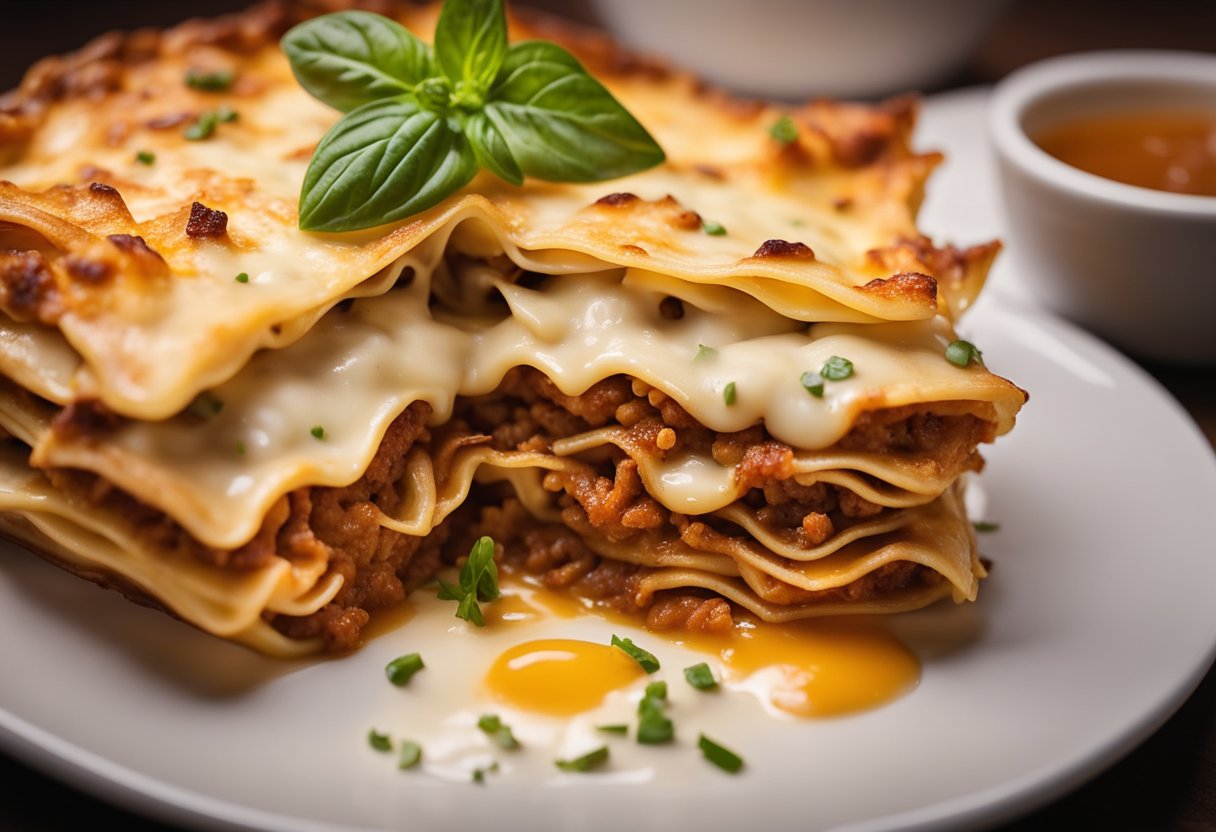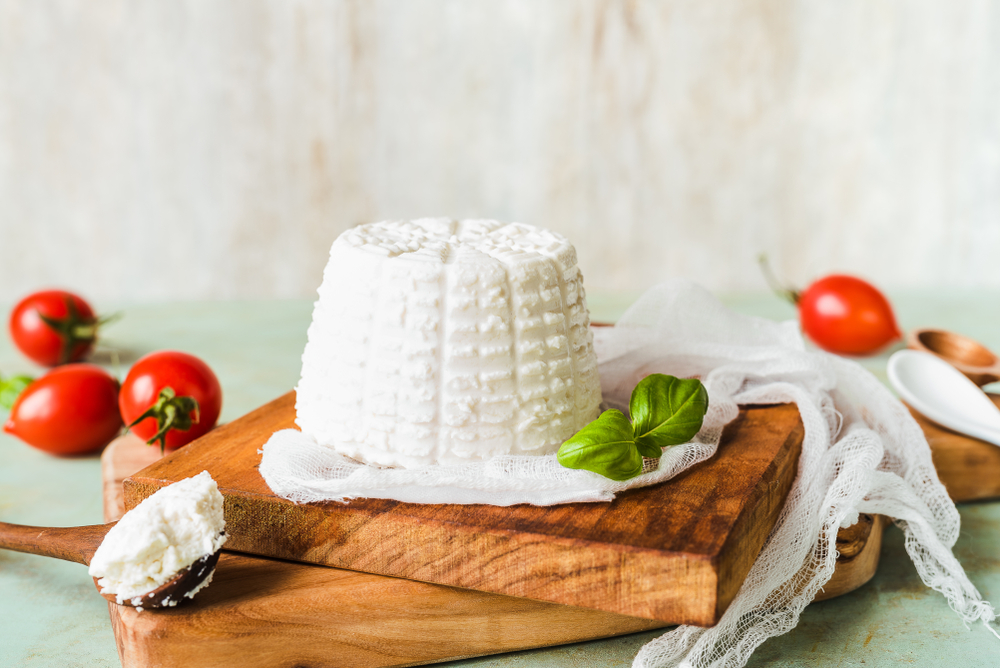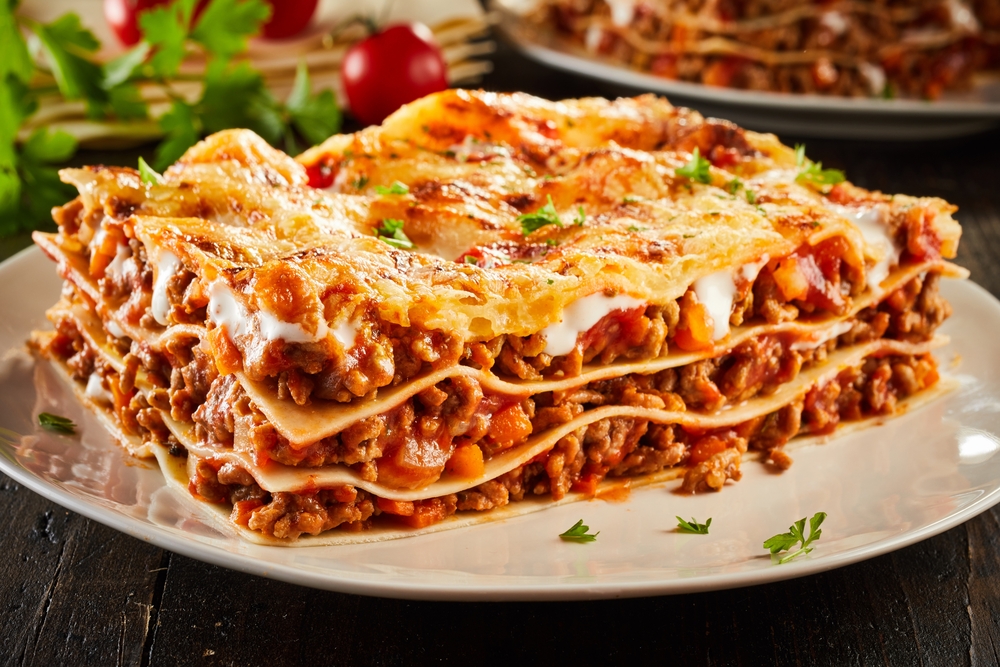Ricotta cheese is a versatile ingredient that can be used in a variety of dishes, from lasagna to cheesecake. However, it can be frustrating to purchase a large tub of ricotta cheese when a recipe only calls for a few tablespoons.
One solution is to freeze the excess ricotta cheese for later use. But can you freeze ricotta cheese? And if so, how should you go about it?
The short answer is yes, you can freeze ricotta cheese. However, the texture of the cheese will change once it has been frozen and thawed. The water content in ricotta cheese is high, which means that the texture will become slightly drier and crumbly once it has been frozen.
Despite this change in texture, frozen ricotta cheese can still be used in a variety of cooked dishes, such as lasagna and gnocchi.
Key Takeaways
- Ricotta cheese can be frozen, but its texture will change once it has been thawed.
- To freeze ricotta cheese, it is best to remove any excess water and freeze it in individual portions.
- Frozen ricotta cheese can be used in cooked dishes, but it is not recommended for use in recipes that call for fresh ricotta.
Understanding Ricotta Cheese

Ricotta cheese is a popular Italian dairy product that has been enjoyed for centuries. It is a soft, creamy, and slightly sweet cheese that is made from the whey left over from the production of other cheeses. Ricotta cheese is unique in that it can be made from the milk of cows, sheep, or goats.
Ricotta cheese has a mild flavor and a grainy texture that makes it a versatile ingredient in many dishes. It can be used in both sweet and savory recipes, such as lasagna, cannoli, and cheesecake.
The production of ricotta cheese involves heating the whey to a specific temperature and adding an acid, such as vinegar or lemon juice. This causes the proteins in the whey to coagulate and form curds, which are then scooped out and drained. The resulting cheese is then packaged and sold.
While ricotta cheese is a delicious addition to many dishes, it is important to note that it does not have a long shelf life. It is best consumed within a few days of purchase and should be stored in the refrigerator.
When it comes to freezing ricotta cheese, it is possible, but the texture will change. The high moisture content in the cheese causes the water to turn into ice, which can cause the cheese to become drier and more crumbly when it thaws.
It is recommended to squeeze out any excess liquid before freezing to help maintain the cheese’s texture.
Why Freeze Ricotta Cheese
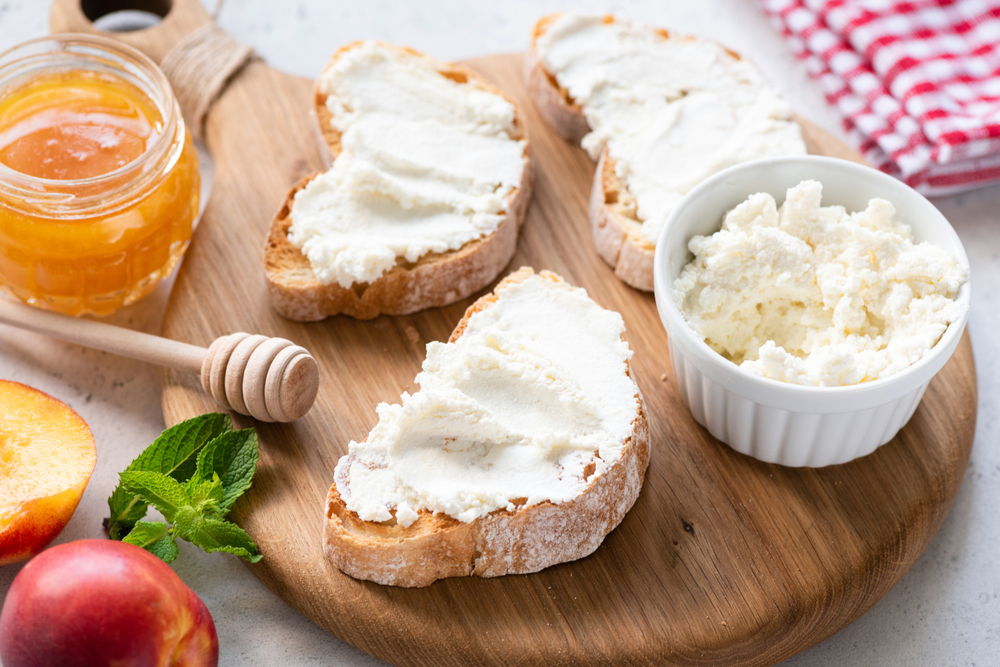
Ricotta cheese is a versatile ingredient that can be used in many different recipes, from lasagna to cheesecake. However, sometimes you may find yourself with leftover ricotta that you don’t want to go to waste. Freezing ricotta cheese is a great way to extend its shelf life and save it for later use.
Freezing ricotta cheese is a simple process that can be done in just a few steps. First, make sure the ricotta is fresh and hasn’t passed its expiration date. Then, transfer the ricotta to a freezer-safe container or bag. Be sure to label the container with the date so you can keep track of how long it has been frozen.
When it comes to using frozen ricotta cheese, it’s important to keep in mind that the texture may change slightly. Frozen ricotta cheese can become slightly grainy or watery after thawing. However, this shouldn’t affect the flavor or overall quality of the cheese.
One thing to keep in mind is that frozen ricotta cheese is best used in cooked dishes rather than uncooked ones. This is because the texture change may be more noticeable in uncooked dishes. However, frozen ricotta cheese can still be used in a variety of recipes, from pasta dishes to baked goods.
Overall, freezing ricotta cheese is a great way to extend its shelf life and save it for later use. Just be sure to follow the proper steps for freezing and thawing, and keep in mind that the texture may change slightly.
Preparing Ricotta Cheese for Freezing
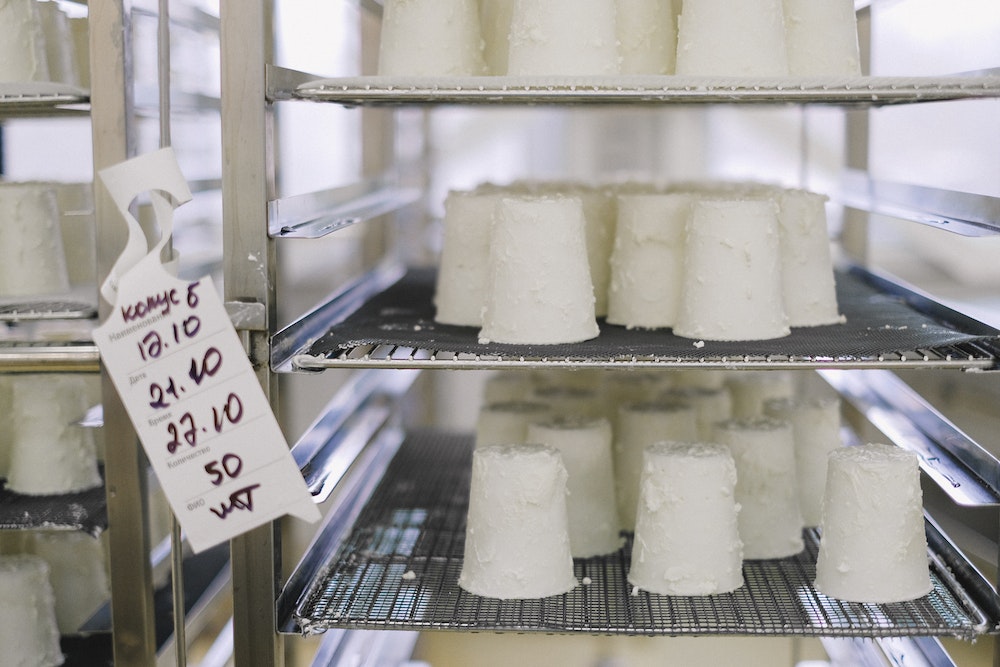
Before freezing ricotta cheese, it is important to prepare it properly. This will help to preserve the flavor and texture of the cheese as much as possible.
One important step is to drain the ricotta cheese to remove excess moisture. This can be done by placing the cheese in a fine mesh strainer over a bowl and letting it sit for about 30 minutes. Alternatively, you can wrap the cheese in paper towels and gently press to remove any excess liquid.
Once drained, the ricotta cheese should be wrapped tightly in plastic wrap to prevent freezer burn. It is recommended to wrap the cheese in individual portions using an ice cube tray for easier thawing later on.
From here, the cheese can be transferred to an airtight container or freezer-safe bag. If using a bag, be sure to press out as much air as possible before sealing to prevent freezer burn.
Mixing the ricotta cheese with other ingredients, such as herbs or spices, can also help to enhance its flavor after thawing. However, be sure to mix the cheese well before freezing to ensure that the ingredients are evenly distributed.
Overall, by following these simple steps, you can prepare ricotta cheese for freezing in a way that will help to maintain its quality and flavor.
Freezing Process of Ricotta Cheese
Ricotta cheese can be frozen to extend its shelf life, but it is important to note that the texture and consistency of the cheese will change once it is thawed.
Here are some tips on how to freeze ricotta cheese:
Airtight Containers or Freezer Bags
One of the easiest ways to freeze ricotta cheese is to transfer it to an airtight container or a freezer bag. Make sure to remove as much air as possible before sealing the container or bag. This will help prevent freezer burn and keep the cheese fresh for a longer period of time.
Freezer-Safe Bag or Ice Cube Trays
Another option is to freeze ricotta cheese in a freezer-safe bag or ice cube trays. This method is ideal for those who want to freeze individual portions of ricotta cheese. Simply spoon the cheese into the bag or tray and freeze until solid. Once frozen, transfer the cheese to an airtight container or freezer bag for long-term storage.
Label and Date
Regardless of the method used to freeze ricotta cheese, it is important to label and date the container or bag. This will help keep track of the cheese’s freshness and ensure that it is used before it goes bad.
Thawing Process
When it comes time to use the frozen ricotta cheese, it is best to thaw it in the refrigerator overnight. Avoid thawing the cheese at room temperature or in the microwave as this can cause the cheese to become grainy and lose its creamy texture.
Overall, freezing ricotta cheese is a great way to extend its shelf life and reduce food waste. By following these simple tips, anyone can freeze ricotta cheese and enjoy it in their favorite recipes for months to come.
Effects of Freezing on Ricotta Cheese
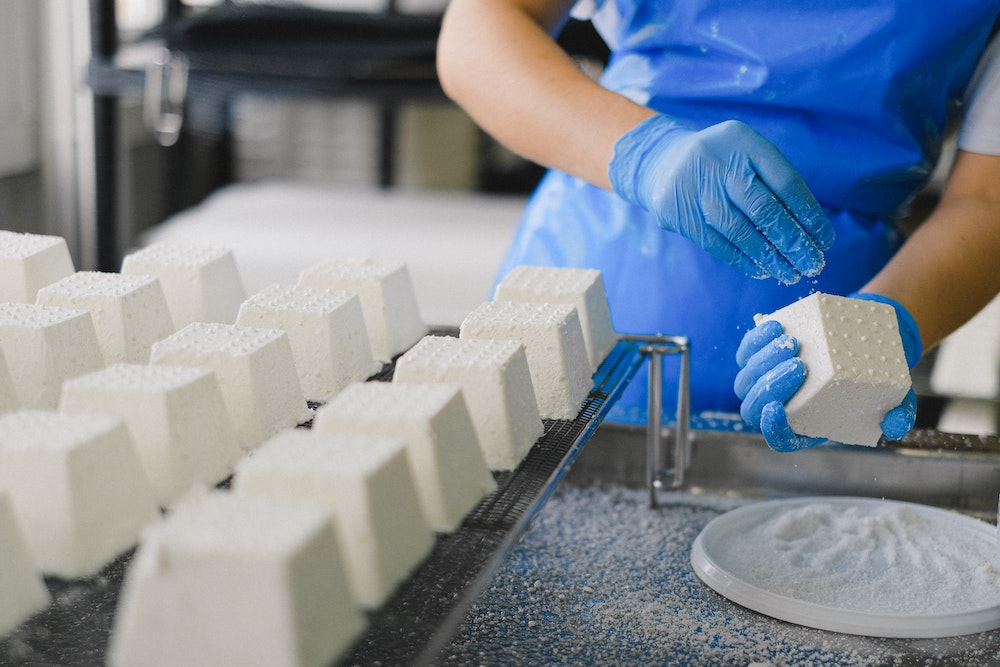
When ricotta cheese is frozen, it can undergo several changes that can affect its texture and flavor. The high moisture content of ricotta cheese means that when it is frozen, the water in it will turn into ice, causing the cheese to become more dry and crumbly in texture. This can result in a grainier texture and a loss of creaminess.
Additionally, the ice crystals that form during the freezing process can cause the cheese to become watery once it is thawed. This can result in a loss of flavor and a less desirable texture. The longer the cheese is frozen, the more likely it is to experience these changes.
Another potential issue with freezing ricotta cheese is freezer burn. Freezer burn occurs when the surface of the cheese becomes dehydrated due to exposure to air.
This can cause the cheese to become discolored and develop a tough, leathery texture. To avoid freezer burn, it is important to store the ricotta cheese in an airtight container or freezer bag.
In general, it is best to avoid freezing ricotta cheese if possible, especially if it will be used in uncooked dishes. However, if it must be frozen, it is recommended to use the previously frozen ricotta cheese in cooked dishes to help mask any changes in texture or flavor.
Thawing and Defrosting Ricotta Cheese
When it comes to thawing and defrosting ricotta cheese, it is important to do it properly to avoid any risk of bacterial contamination and maintain the cheese’s texture and flavor.
Here are some tips to help you thaw and defrost your ricotta cheese:
Thawing Ricotta Cheese
The best way to thaw ricotta cheese is by leaving it in the refrigerator for several hours, about five to six hours. If you exceed more than eight hours in the fridge, the texture may deteriorate even further. Never thaw ricotta at room temperature, as this can put the cheese at risk of bacterial contamination.
If you need to use the ricotta cheese quickly, you can thaw it using a microwave, but you need to be very careful. Put the cheese in a microwave-safe dish and use the defrost setting for a few minutes. Check the cheese every 30 seconds to avoid overheating and stirring it to ensure even thawing.
Defrosting Ricotta Cheese
If you have frozen your ricotta cheese, you need to defrost it before using it. To defrost ricotta cheese, remove it from the freezer and transfer it to the refrigerator. Allow it to defrost slowly for several hours or overnight.
Once the ricotta cheese has defrosted, you will notice that it is a bit watery. You can remove the excess liquid by draining it and pressing it lightly with paper towels to absorb excess water, preventing the formation of unnecessary ice crystals during freezing.
Refreezing Ricotta Cheese
It is not recommended to refreeze ricotta cheese once it has been thawed. Refreezing ricotta cheese can cause it to lose its texture and flavor, and it can also increase the risk of bacterial contamination. If you have a large amount of ricotta cheese and don’t plan to use it all, it is best to freeze it in smaller portions to avoid having to refreeze it.
In summary, thawing and defrosting ricotta cheese is a simple process that requires some patience and care. By following the tips above, you can ensure that your ricotta cheese maintains its texture, flavor, and quality.
Using Frozen Ricotta Cheese
When it comes to using frozen ricotta cheese, it’s important to note that the texture of the cheese will change after being frozen due to its high moisture content. However, there are still plenty of ways to use it in various dishes.
it’s important to note that the texture of the cheese will change after being frozen due to its high moisture content. However, there are still plenty of ways to use it in various dishes.
For cooked dishes, such as casseroles, stews, and soups, frozen ricotta cheese can be stirred in and will still provide a creamy texture. It can also be used in baked goods like muffins, tarts, and bagels, as well as desserts like cheesecake and ricotta pie.
When it comes to pasta dishes, frozen ricotta cheese can be used in lasagna, stuffed shells, and even on top of pizza. It can also be added to savory dishes like salads, sandwiches, and calzones for an extra burst of flavor.
One thing to keep in mind is to avoid using frozen ricotta cheese in recipes that call for fresh ricotta, as the texture will not be the same. However, if the recipe calls for cooked ricotta, then frozen ricotta cheese can be used as a substitute.
Overall, while frozen ricotta cheese may not have the same texture as fresh ricotta, it can still be a useful ingredient in a variety of dishes.
Safety Concerns and Precautions
When freezing ricotta cheese, it is important to take certain safety precautions to avoid bacterial contamination.
Ricotta cheese is a perishable food item that can harbor harmful bacteria, including Listeria monocytogenes, which can cause serious illness in pregnant women, newborns, and individuals with weakened immune systems.
Therefore, it is essential to ensure that the ricotta cheese is fresh and has not been contaminated before freezing.
One way to ensure the safety of the ricotta cheese is to check for any signs of spoilage, such as an off odor or mold growth. If the ricotta cheese has an unusual odor or appearance, it should be discarded immediately.
Additionally, it is recommended to label the container with the date of freezing and the contents to avoid confusion and prevent the use of expired ricotta cheese.
When freezing ricotta cheese, it is best to use an unopened container or the original container to maintain its freshness. The original container should be tightly sealed to prevent air from entering and freezer burn from occurring.
If the ricotta cheese is in an opened container, it should be transferred to an airtight container or resealable bag and pressed out all of the air before sealing.
It is important to note that frozen ricotta cheese may have a grainier texture once it is defrosted, though its flavor is preserved. Therefore, it is recommended to use frozen ricotta cheese in recipes that do not require a smooth texture, such as lasagna or baked ziti.
Overall, by taking the necessary safety precautions, ricotta cheese can be safely frozen and used in a variety of dishes.
Additional Tips and Advice
When it comes to freezing ricotta cheese, there are a few additional tips and pieces of advice you might find helpful.
First, it’s important to note that the texture of ricotta cheese can change when frozen and thawed. While it may still be perfectly fine to use in recipes like lasagna or stuffed shells, it may not be suitable for uses where a creamy texture is desired.
If you plan to freeze ricotta cheese, consider portioning it out into smaller amounts. This makes it easier to thaw only what you need and reduces the risk of waste. You can use plastic wrap or an ice cube tray to create individual portions before transferring them to a freezer-safe container.
When storing ricotta cheese in the freezer, be sure to use packaging that is specifically labeled as freezer safe. This will help prevent freezer burn and keep the cheese fresh for longer.
Additionally, try to remove as much air as possible from the packaging before sealing it to further prevent freezer burn.
If you’re looking to use frozen ricotta cheese in a recipe that calls for a smooth, creamy texture, consider blending it with a small amount of milk or cream after thawing. This can help restore some of the original texture and make it easier to work with.
Finally, keep in mind that ricotta cheese has a relatively high water content, which means it may separate and become grainy when frozen. While this shouldn’t affect its flavor, it may not be suitable for uses where a smooth texture is desired, such as in cannoli filling or as a garnish for fruit.
Overall, while freezing ricotta cheese may not be ideal for all uses, it can be a convenient way to extend its shelf life and make it more versatile in the kitchen.
Frequently Asked Questions
Can you freeze cooked ricotta cheese?
Yes, you can freeze cooked ricotta cheese. However, it is important to note that the texture of the cheese may change after freezing.
The cheese may become slightly grainy and lose some of its creamy texture. It is recommended to use frozen cooked ricotta cheese in dishes where the texture is less important, such as casseroles or lasagnas.
How to defrost ricotta cheese in the microwave?
To defrost ricotta cheese in the microwave, place the frozen cheese in a microwave-safe dish. Heat the cheese on the defrost setting for 30-second intervals until it is thawed.
Be sure to stir the cheese after each interval to ensure even thawing. Avoid using high heat settings, as they can cause the cheese to become rubbery.
Can you freeze ricotta cheesecake?
Yes, you can freeze ricotta cheesecake. Wrap the cheesecake tightly in plastic wrap or aluminum foil before placing it in an airtight container or freezer bag. When ready to eat, allow the cheesecake to thaw in the refrigerator overnight before serving.
Frozen ricotta dessert recipes?
There are many frozen dessert recipes that use ricotta cheese as a main ingredient. Some popular options include ricotta ice cream, ricotta and berry sorbet, and frozen ricotta mousse. These desserts can be made ahead of time and stored in the freezer for later use.
Can you freeze ricotta and spinach mixture?
Yes, you can freeze ricotta and spinach mixture. However, it is important to note that the texture of the mixture may change after freezing. The mixture may become slightly grainy and lose some of its creaminess.
It is recommended to use frozen ricotta and spinach mixture in dishes where the texture is less important, such as casseroles or lasagnas.
How long does ricotta cheese last in the refrigerator?
Ricotta cheese can last up to two weeks in the refrigerator if stored properly in an airtight container. Be sure to check the expiration date on the packaging and use the cheese before it goes bad. If the cheese has a sour smell or a moldy appearance, it should be thrown away.





